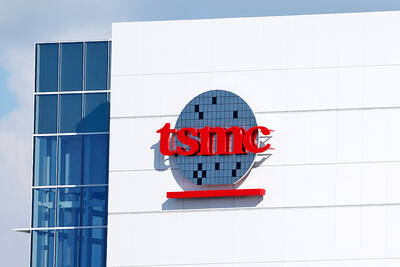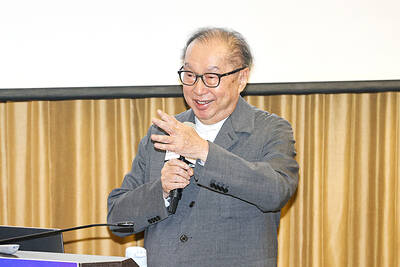The octopus’ ability to camouflage itself has inspired a new kind of thin, flexible fabric that can automatically match patterns, US researchers said on Tuesday.
Creatures of the ocean known as cephalopods — including cuttlefish, squid and octopuses — are equipped with sensors in their skin that help in some way to mimic the look of their surroundings.
By closely studying how these soft-bodied swimmers do it, engineers and biologists joined in a nearly three-year-long US Navy-funded research collaboration to create a material that acts in a similar way.
The team’s initial result, described in this week’s edition of the Proceedings of the National Academy of Sciences, is far from ready for commercial use. However, architects, interior designers, fashion houses and the US military all have their eyes on its eventual capability to provide a first-of-its-kind human-made camouflaging material, experts say.
“If you illuminate it with white light and different patterns, it will automatically respond to that and produce a pattern that matches,” said lead author John Rogers, a professor in the department of materials science and engineering at the University of Illinois. “Having said that, we are a long way from color-morphing wallpaper, but it is a step that could lead in that direction over time.”
The flexible material’s layers include temperature-sensitive dye and photosensors that respond in 1 to 2 seconds to changing patterns.
The dye appears black at low temperatures and clear at temperatures above 47°C.
“These devices are capable of producing black-and-white patterns that spontaneously match those of the surroundings, without user input or external measurement,” the study said.
The international research team included chemistry and mechanics experts at leading Chinese institutions, as well as Roger Hanlon, an expert on the physiology of cephalopod skin.
“Adaptive camouflage is extremely important to this animal group,” said Hanlon, senior scientist at the Marine Biological Laboratory in Woods Hole, Massachusetts.
Since cephalopods are soft-bodied and are in the middle of the food chain, they are under constant threat from diving birds, barracuda and other fish that want to eat them.
They have the ability to quickly survey their surroundings and turn on the right camouflage pattern, choosing from three to five basic templates in their repertoire.
“Within a second, in general, they are doing this magical process of looking at this complex visual world immediately surrounding them,” Hanlon said. “That is stunning. There is no other animal group that can do it.”
These skills help them escape predators and attack prey.
Hanlon said his lab has published research showing that cephalopods seemed to have light sensors distributed throughout the skin that they presumably use to create the appropriate disguises.
“We only proved that the molecules were there, we couldn’t prove that they were doing something with light. We are still looking at that,” Hanlon said. “We didn’t think that should hold John back. He took the idea and embedded them in his materials the way we think animals do.”
In that sense, the mechanical engineers on the team were able to make a material that was inspired by what biologists believe animals are doing, but have not quite proven yet.
“I think it was quite a feat,” Hanlon said.

SEASONAL WEAKNESS: The combined revenue of the top 10 foundries fell 5.4%, but rush orders and China’s subsidies partially offset slowing demand Taiwan Semiconductor Manufacturing Co (TSMC, 台積電) further solidified its dominance in the global wafer foundry business in the first quarter of this year, remaining far ahead of its closest rival, Samsung Electronics Co, TrendForce Corp (集邦科技) said yesterday. TSMC posted US$25.52 billion in sales in the January-to-March period, down 5 percent from the previous quarter, but its market share rose from 67.1 percent the previous quarter to 67.6 percent, TrendForce said in a report. While smartphone-related wafer shipments declined in the first quarter due to seasonal factors, solid demand for artificial intelligence (AI) and high-performance computing (HPC) devices and urgent TV-related orders

BYPASSING CHINA TARIFFS: In the first five months of this year, Foxconn sent US$4.4bn of iPhones to the US from India, compared with US$3.7bn in the whole of last year Nearly all the iPhones exported by Foxconn Technology Group (富士康科技集團) from India went to the US between March and last month, customs data showed, far above last year’s average of 50 percent and a clear sign of Apple Inc’s efforts to bypass high US tariffs imposed on China. The numbers, being reported by Reuters for the first time, show that Apple has realigned its India exports to almost exclusively serve the US market, when previously the devices were more widely distributed to nations including the Netherlands and the Czech Republic. During March to last month, Foxconn, known as Hon Hai Precision Industry

Taiwan Semiconductor Manufacturing Co (TSMC, 台積電) and the University of Tokyo (UTokyo) yesterday announced the launch of the TSMC-UTokyo Lab to promote advanced semiconductor research, education and talent development. The lab is TSMC’s first laboratory collaboration with a university outside Taiwan, the company said in a statement. The lab would leverage “the extensive knowledge, experience, and creativity” of both institutions, the company said. It is located in the Asano Section of UTokyo’s Hongo, Tokyo, campus and would be managed by UTokyo faculty, guided by directors from UTokyo and TSMC, the company said. TSMC began working with UTokyo in 2019, resulting in 21 research projects,

Quanta Computer Inc (廣達) chairman Barry Lam (林百里) yesterday expressed a downbeat view about the prospects of humanoid robots, given high manufacturing costs and a lack of target customers. Despite rising demand and high expectations for humanoid robots, high research-and-development costs and uncertain profitability remain major concerns, Lam told reporters following the company’s annual shareholders’ meeting in Taoyuan. “Since it seems a bit unworthy to use such high-cost robots to do household chores, I believe robots designed for specific purposes would be more valuable and present a better business opportunity,” Lam said Instead of investing in humanoid robots, Quanta has opted to invest